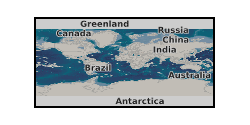Adam Mickiewicz University
Type of resources
Topics
Keywords
Contact for the resource
Provided by
Years
Formats
Representation types
Update frequencies
Resolution
-

The study in three coal mining regions: Lower Silesia, Upper Silesia and Lublin (each N=500) was conducted using Computer Assisted Web Interview (CAWI). The questionnaire includes the block of questions concerning mine water awareness, climate change and local/place attachment. The survey online took 15 to 20 minutes and was prepared after in-depth pilot research among participants with different education level from the mining regions. We used the uninformed approach to the survey, so there were no additional questions nor requirements for participants prior to the survey. Since the mine water energy extraction is a technical issue that is neither well known nor commonly used in the narratives of Poles, we tested survey questions with pilot cognitive interviews to remove the technical language and reduce the number of replies without understanding. The interviews were conducted with 10 participants in July 2020 and due to the pilot's recommendations and results, we implemented additional changes in the final version of the questionnaire. Specifically, some questions were simplified and the background information on mine water extraction was simplified and shortened The survey CAWI was completed by adult people aged 18-65 (N=1500) between 14-19 August 2020 by Kantar Research Agency. The sample was constructed using KANTAR’s internet panel profiled for the basic demographics, such as gender, age, and the town size. Particular attention paid to the quality of the panel is reflected in its structure. Kantar’s internet panel reflects the profile of the Polish population of Internet users in terms of its participants’ demographic characteristics. The sample from each region was 500 respondents and among the full sample (N=1500) we reached only 192 people who chose to call “mining areas” as best description of the area where they live. Although the three voivodships were chosen due to its mining industry the selected sample covers the region in general in which mining communities are statically not fully represented. We also asked about the subjective perception of the area respondents live in, which we further analysed with spatial distribution. The dataset was created within SECURe project (Subsurface Evaluation of CCS and Unconventional Risks) - https://www.securegeoenergy.eu/. This project has received funding from the European Union’s Horizon 2020 research and innovation programme under grant agreement No 764531
-
This dataset contains ~50,000 single nucleotide polymorphisms (SNPs, DNA mutations) for Scots pine (Pinus sylvestris) and closely related members of the Pinus mugo complex, which were selected for inclusion on a 50K SNP Axiom array Full details about this dataset can be found at https://doi.org/10.5285/cbaa464a-ac18-42bf-8518-c746d8d97270
-
The dataset contains genotypes for samples used to validate a 50K single nucleotide polymorphism (SNP, DNA mutation) Axiom array for Scots pine (Pinus sylvestris) and closely related members of the Pinus mugo complex. Full details about this dataset can be found at https://doi.org/10.5285/7ee55609-d6b1-4693-8b36-2bf84fef76c2
-
This dataset contains details of the phenotypes (height, bud set and budburst) and genotypes (via SNP array) of trees from a common garden multi-species pine (Pinus sylvestris, Pinus mugo and Pinus uncinata) glasshouse trial between 2010 and 2013. Full details about this dataset can be found at https://doi.org/10.5285/55118e26-cf5c-41d6-9157-738fce6bdddf
-
The data comprise summary statistics for performance of a genotyping microarray for a test set of 87 samples for four pine species. The summary statistics comprise state (polymorphic, monomorphic), mean allele frequency and conversion rate, estimated for each locus as a mean across 87 sample genotypes. The array comprised 49,829 SNPs (single nucleotide polymorphisms) from several sources. The majority (N = 49,052) were obtained from transcriptome sequencing of four pine species: Pinus sylvestris, Pinus mugo, Pinus uncinata and Pinus uliginosa. The SNP set was filtered by the array manufacturer (Thermo Fisher) based on p-convert values signifying the SNP array quality, and a list of recommended and non-recommended SNP probes (avoiding SNPs with polymorphisms within 35 bp) was provided to the authors. These included SNPs that were common to all species and also SNPs fixed in one species and polymorphic within and among others. A further set of SNPs (N = 578) were included from candidate genes (N = 279), which had been resequenced in previous population genetic studies of the pine species. Variation in mitochondrial DNA (mtDNA) was targeted by inclusion of a set of mtDNA- specific SNPs (N = 14). Finally, a set of SNPs putatively associated with susceptibility to Dothistroma needle blight (discovered in Pinus radiata, European Nucleotide Archive accession numbers ERS1034542-53) were also included (N = 185). Full details about this dataset can be found at https://doi.org/10.5285/0ba33e96-67cb-4650-b2bd-6ee13fa7de97
 NERC Data Catalogue Service
NERC Data Catalogue Service